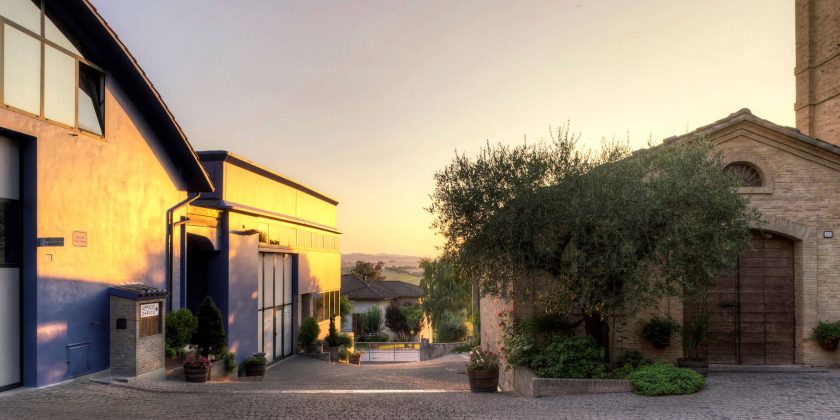Santa Barbara
Stefano Antonucci’s dynamic and candid personality is captivating. This irresistible drive and energy is also what led him, in 1994, to make the drastic decision to change his life direction and return to the small village of his childhood, Barbara, in the heart of the Marche region, giving up his job as a banker. Stefano had always been intrigued by the world of wine and also deeply connected to his territory and so, he began the transformation of his family’s small cooperative winery into the Santa Barbara Winery of today, a reference point for exceptional quality in the Marche. Since its beginning, the Santa Barbara winery has always had two principal objectives: to reintroduce the Marche region’s indigenous grape varieties (Verdicchio dei Castelli di Jesi – white – and Montepulciano and Lacrima di Morro d’Alba – reds), and to craft wines of great personality that are appealing on the international stage while respecting the tradition of the Marche land. With this as his driving force, Stefano produces soulful wines with traditional varietals, elegant, intriguing and persuasive examples of the finest winemaking. He has been called a “visionary and eclectic winemaker, continually striving for stylistic perfection.” Stefano sees himself in those words as they perfectly sum up his philosophy, both in the beginning and today. As he put it himself, “My secret is to make wine that first and foremost appeals to me, a winedrinker’s wine.”
The vineyards are 25-40 years old and encompass an area of about 45 hectares, from the rolling hills of Barbara, across Serra de’ Conti, Montecarotto, and Arcevia up to Morro d’Alba and Cupramontana. The particularity of these areas lies in the soils, water-rich clay with some calcareous and gravelly areas, occupying a strip of land bordered by the Adriatic Sea to the east and the Apennines to the west. Work in the vineyards is carried out by hand under the attentive guidance of expert farmers, seeking a balance between cordon spur pruning, focused interventions, and thinning only when necessary.




